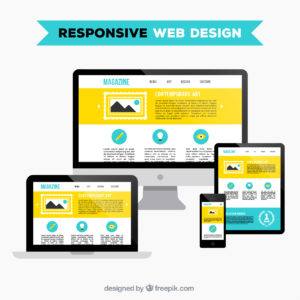- 26Shares
When designing your company’s online presence, it is critical that you think beyond the desktop and ensure that your website is mobile responsive. What is responsive website design? It’s as simple as making sure that your design adjusts to the size of the screen, providing a fully functional and user-friendly experience regardless of screen size. With nearly 80% of all users in the United States expected to regularly browse the web from their mobile device in 2017, businesses who ignore this fact and only focus on the desktop experience are missing out on the opportunity to reach a vast consumer audience.
 One Website for All
One Website for All
While some businesses actually choose to operate two websites running the same information, one for desktop users and another for mobile and tablet users, this method is not only inefficient but also unnecessary. Website design platforms offered by WordPress, Wix, and Squarespace offer seamlessly responsive designs that adjust based on the screen size to ensure maximum use of space, scalable images, clickable links, and simple navigation.
Search Engine Ranking
If you want to improve your website’s search engine ranking, make sure you have designed a website that is responsive. Smartphones are now the primary method of browsing the web, with mobile internet time in the US now significantly higher at 51% compared to desktop (42%). Google has taken note of this and now recommends responsive website design for all mobile-optimized sites, even basing SEO scores and search engine ranking upon the presence of this feature.
Mobile Users = Buyers
In 2014, mobile commerce, or m-commerce, accounted for 12% of all online purchases in the United States. By 2020, m-commerce is forecasted to account for 45% of all online sales. Mobile users are informed, prepared, and ready to make a purchase decision. Ensure that your website is ready for the new generation of consumers and making the most of the opportunity to make a great first impression, establish your expertise, and influence customers.


